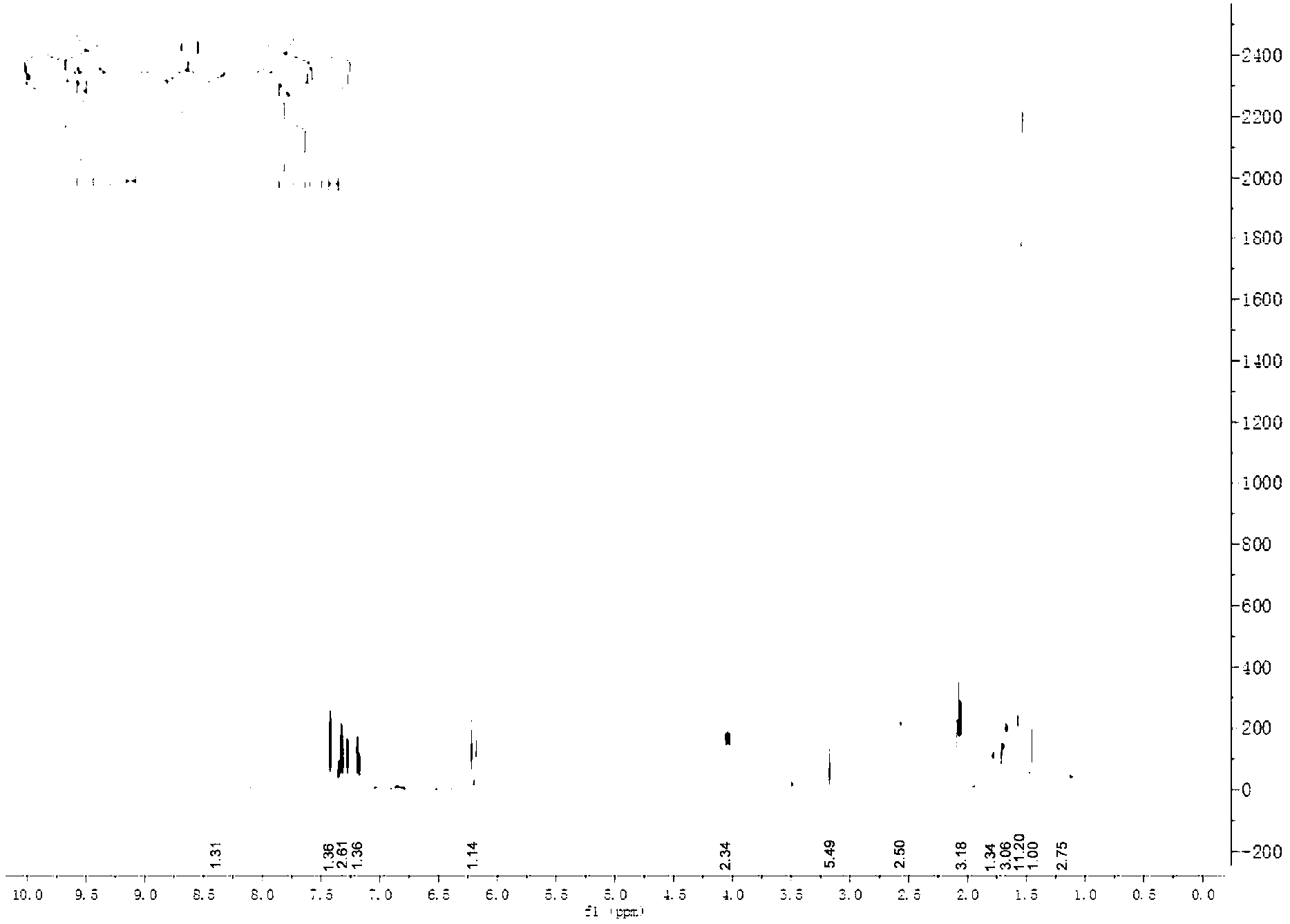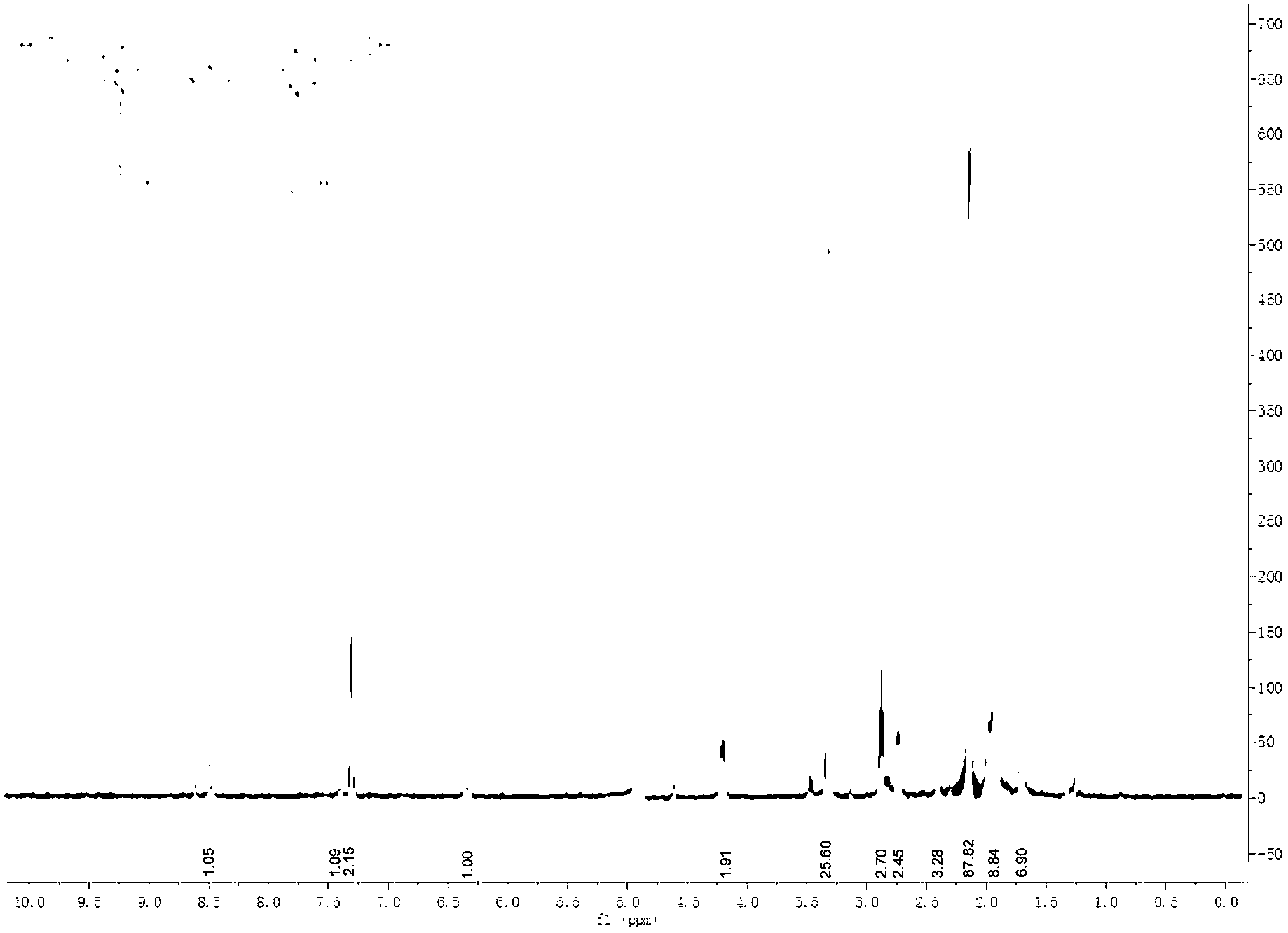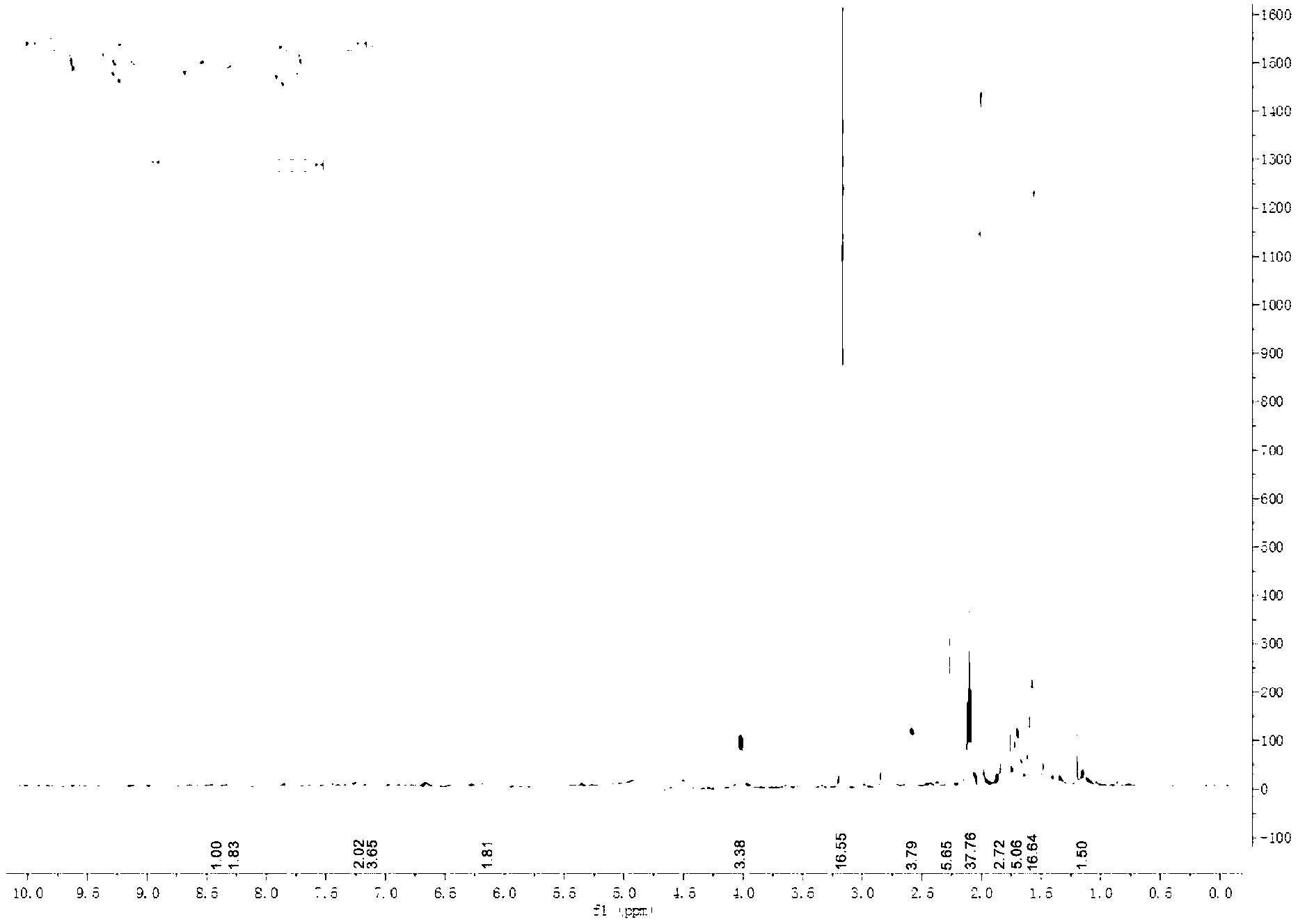Organic near-infrared two-photon fluorescent dye
A two-photon fluorescence and near-infrared technology, applied in the chemical field, can solve the problems of two-photon fluorescence characteristics of carbocyanine dyes, and achieve the effects of improved two-photon fluorescence efficiency, good water solubility, and stable chemical properties
- Summary
- Abstract
- Description
- Claims
- Application Information
AI Technical Summary
Problems solved by technology
Method used
Image
Examples
Embodiment 1
[0050] In the present invention, the near-infrared fluorescent compound has the structure of formula I:
[0051]
[0052] Formula I
[0053] Wherein, X is chlorine or bromine or iodine or ClO 4 - ; 1 is no substituent or alkyl or chlorine or nitro or sulfonate or carboxyl; R 2 is chlorine or bromine; n is 1 or 2 or 3 or 4 or 5 or 6 or 7 or 8 or 9 or 10 or 11 or 12;
[0054] Its synthetic route is shown in formula II,
[0055]
[0056] Formula II.
[0057] Among the present invention, the structural formula of preferred embodiment compound is as shown in Table 1,
[0058] Table 1
[0059]
[0060]
Embodiment 2
[0061] Embodiment 2 synthesizes dialdehyde
[0062]
[0063] 7.2mL POCl 3 and 2g cyclohexanone dissolved in 10mL CH 2 Cl 2 Add it dropwise to 8mL DMF and 8mL CH in an ice-water bath and magnetic stirring 2 Cl 2 in the mixed solution. After the dropwise addition, it was moved to room temperature and heated to reflux in an oil bath at 65°C for 3h. After cooling, the reaction solution was poured into 50°C ice water, left at room temperature to melt, and then transferred to a separatory funnel for static layering. After removal of the lower organic solution, a yellow precipitate was obtained by filtration in the upper aqueous phase. After repeated washing with ice water and vacuum drying, 2.5 g of the reactant was obtained with a yield of 71.8%.
Embodiment 3
[0064] Embodiment 3 synthetic compound 1
[0065]
[0066] 198 mg (1.25 mmol) of 2,3,3-trimethylindole and 0.56 g (4 mmol) of butane sultone were dissolved in 5 ml of o-dichlorobenzene. Under nitrogen atmosphere, 120°C oil bath with magnetic stirring, reflux reaction for 12h. After the reaction solution was cooled to room temperature, it was dropped into 50 ml of glacial diethyl ether at 0°C. After the red precipitate precipitated, it was suction filtered, redissolved in 10ml of distilled water, and washed with CHCl 3 Extraction and freeze-drying gave 1284 mg of the compound with a yield of 76.9%.
[0067]
[0068] Dissolve 241mg (1.25mmol) of 2,3,3-trimethyl-5-chloroindole and 0.56g (4mmol) of butane sultone in 5ml of o-dichlorobenzene, in a nitrogen atmosphere, in an oil bath at 120°C Magnetic stirring, reflux reaction for 12h. After the reaction solution was cooled to room temperature, it was dripped into 50ml of glacial ether at 0°C, a red precipitate precipitate...
PUM
 Login to View More
Login to View More Abstract
Description
Claims
Application Information
 Login to View More
Login to View More - R&D
- Intellectual Property
- Life Sciences
- Materials
- Tech Scout
- Unparalleled Data Quality
- Higher Quality Content
- 60% Fewer Hallucinations
Browse by: Latest US Patents, China's latest patents, Technical Efficacy Thesaurus, Application Domain, Technology Topic, Popular Technical Reports.
© 2025 PatSnap. All rights reserved.Legal|Privacy policy|Modern Slavery Act Transparency Statement|Sitemap|About US| Contact US: help@patsnap.com



